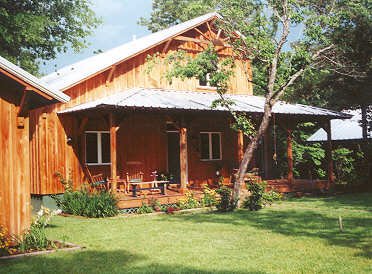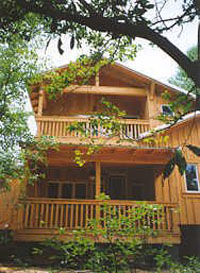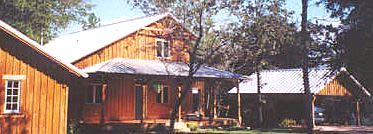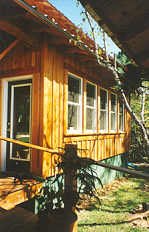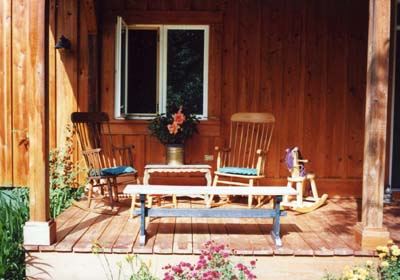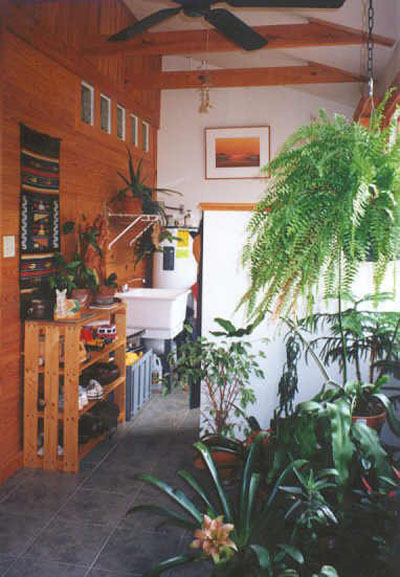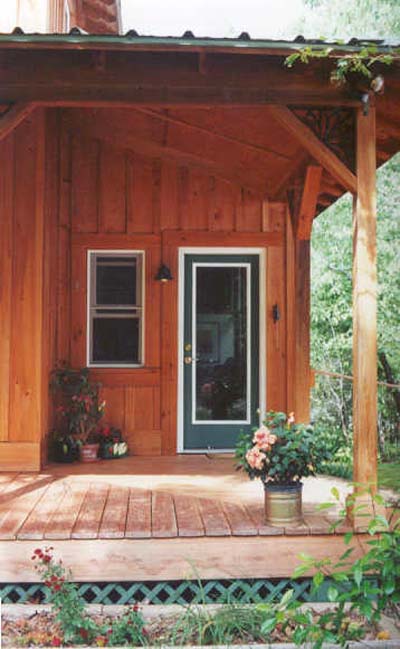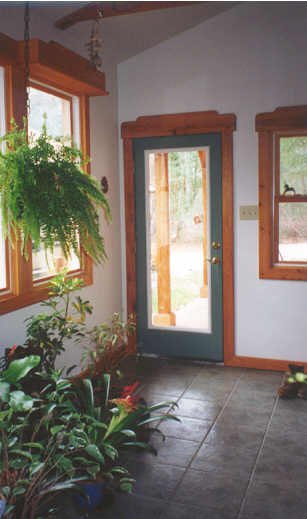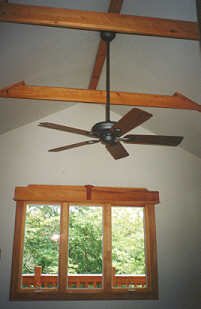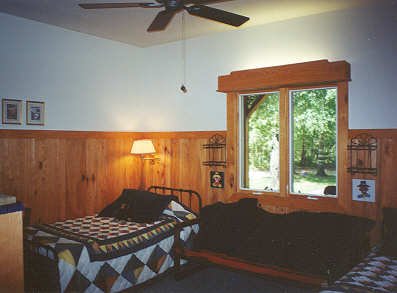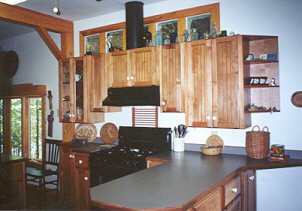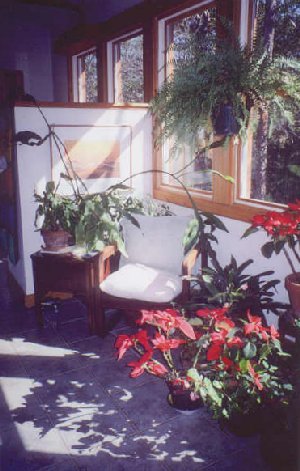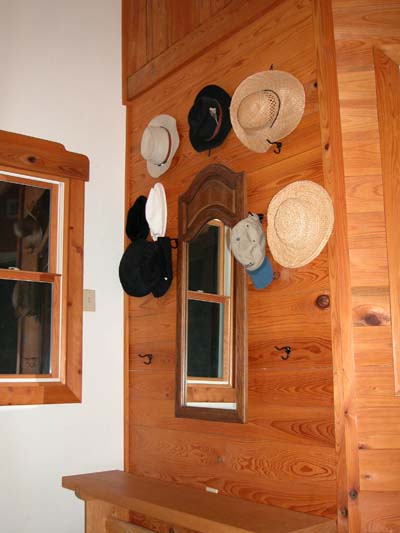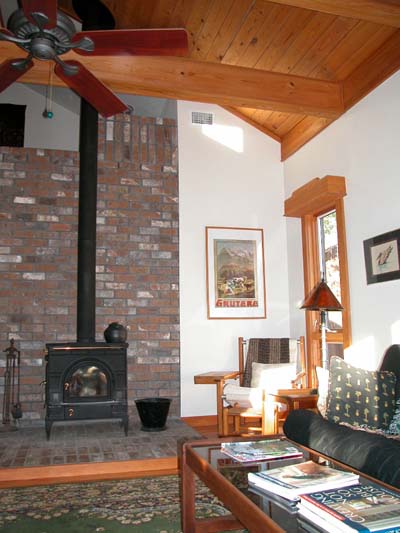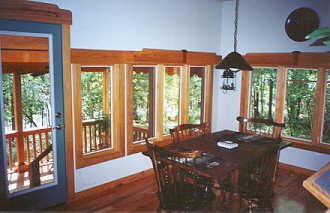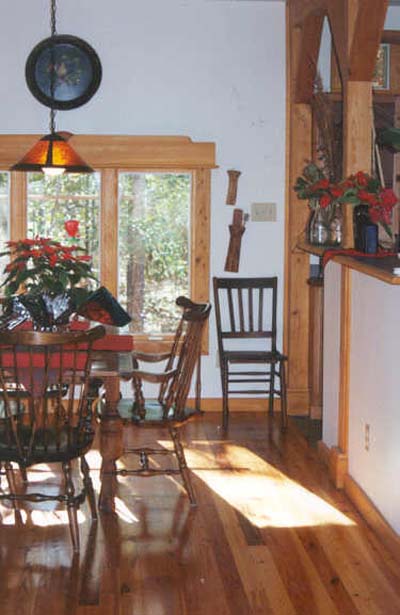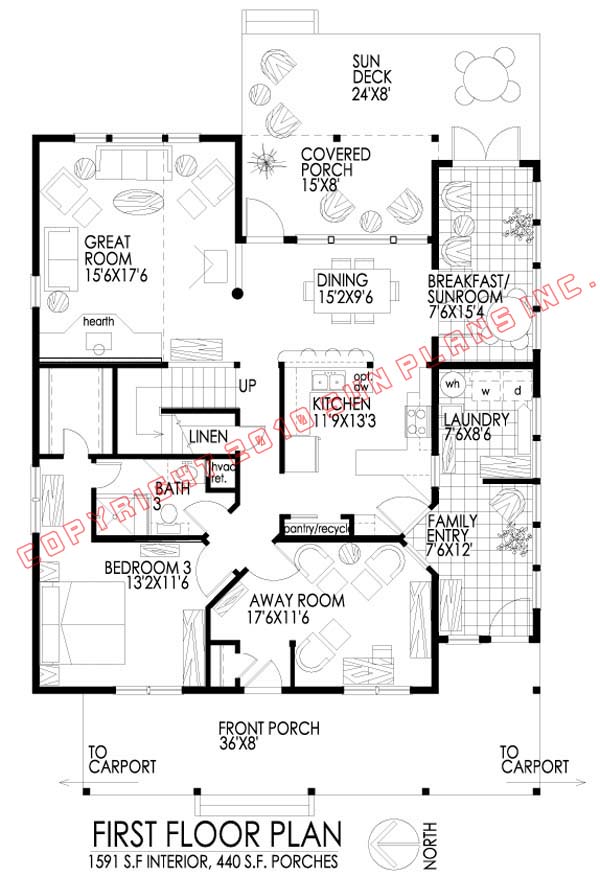
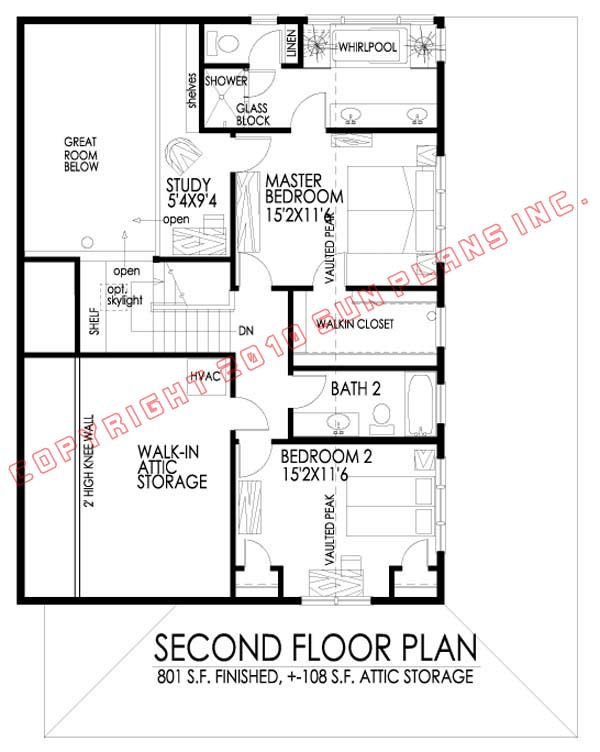
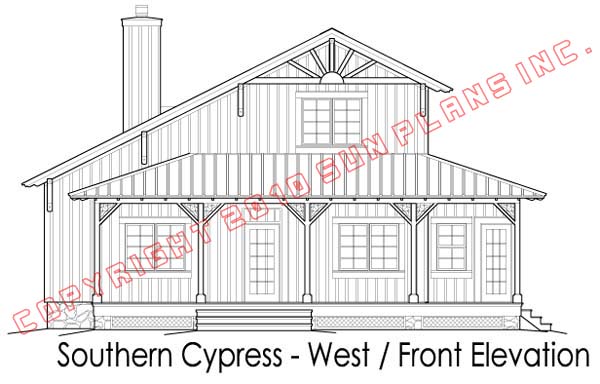
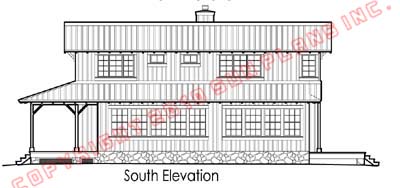
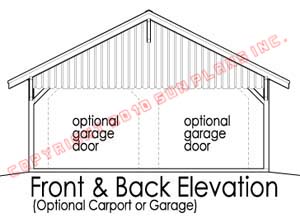
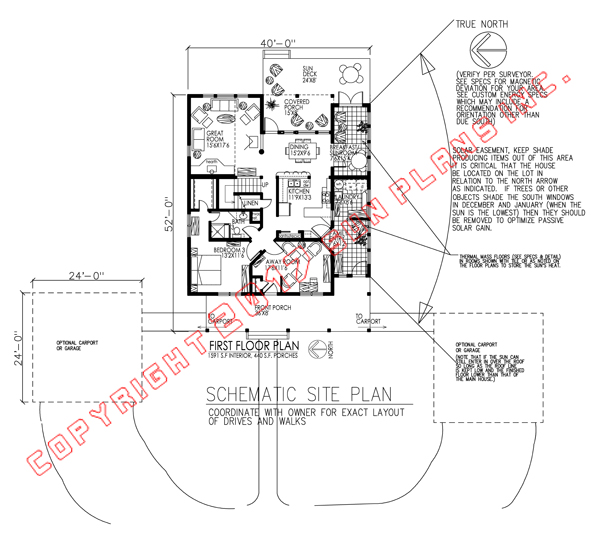
Study Plans include:
- A mini set of design-oriented drawings set up for 11"x17".
- A choice between a Paper version sent by US Priority Mail or the PDF version sent via email.
- Unlimited printing with PDF's for sharing with family members.
- 6 to 9 pages of drawings depending upon the complexity of the home.
- Click here to see an example set for a 1.5 story home with daylight basement.
- Schematic site plan, floor plans (with room sizes and furniture), daylight basements if applicable, exterior elevations, a schematic section of the house to help visualize the interior, kitchen elevations and garage plans.
- A mini set of construction drawings set up for 11"x17"
- Choice of PAPER sent by US Priority Mail or PDF version sent via email. (Select PDF to print extra copies or share electronically with other building professionals.)
- 10 to 16 pages of drawings depending upon the complexity of the home.(See each house plan description for the drawings that come with each design.)
- Dimensions and construction notes.
- Click here to see an example Review Set of a 1.5 story home with daylight basement.
- A copy of the Study Plan.
- An "Opinion of Probable Construction Cost" from Sun Plans if requested. Sun Plans evaluates the design and compares it to similar home designs for which other clients have provided construction costs. A range of construction cost is provided. (This is based on national information. Sun Plans does not have statistics by state, region or country.)
- Six sets of Construction Prints on 24"x36" paper shipped via UPS ground or PDF computer files sent by email
- 10 to 16 pages of drawings depending upon the size and complexity of the home. (See individual house plan descriptions for specific drawings for each design.)
- Schematic site plan (cover sheet showing how to orient the house for passive solar gain)
- Foundation Plan (either slab-on-grade, crawlspace, below grade or daylight basement)
- First and second floor plans (many construction notes, window sizes, etc.)
- Exterior elevations (all four sides shown in hatched detail)
- Schematic Building section (cut-away through the home showing basic configuration)
- Kitchen elevations (all sides of the kitchen)
- Typical wall detail (showing the various building materials recommended)
- Schematic electrical (showing lights, switches and outlets)
- Schematic framing plans (showing floor framing, roof framing and beams)
- Garage or Carport
- Custom Energy Specs. (Read more.)
- Under the Tell Me More about the Review Set, you can see an example set of drawings; however, with Construction Prints, the plans are updated to the current in-house checklist, do not have the Not For Construction, and include the Custom Energy Specs.
- One hour of technical support with the architect by email or phone
- Order Construction Prints through the Pricing tab on any house plan.
- After an order is placed, reply to the email received to advise of the requested information Sun Plans will need to prepare the Custom Energy Specs.
- Allow 5 business days for updating the design to the Sun Plans in-house checklist and preparation of the the Custom Energy Specs. (Shipping then takes another 3-7 days.)
- With PDF's, unlimited copies of the Construction Prints can be printed locally so long as they are used for building one home. PDF's are handy for sending to builders, mortgage companies, appraisers, home energy raters, and others who may be assisting with the planning and construction of the home such as the builder's subcontractors. Some building inspection departments require PDF.
- CAD files of the Construction Drawings (see below for options)
- PDF file of the Construction Prints (see Construction Prints)
- PDF file of Custom Energy Specs
- PDF file of Copyright Release to allow the house to be modified and changed to build one house
- Under the Tell Me More about the Review Set, you can see an example set of drawings; however, with Construction Prints and CAD Files, the plans are updated to the current in-house checklist, do not have the Not For Construction, and include the Custom Energy Specs.
- One hour of technical support. This can include review by the Sun Plans' architect on proposed changes prior to preparing Custom Energy Specs. If the customer sends a list of proposed changes immediately after placing the order, the architect can review them for energy implications and try to address them in the Custom Energy Specs.
- Order CAD files through the Pricing tab on any house plan.
- After an order is placed, reply to the email received to advise of the requested information Sun Plans will need to prepare the Custom Energy Specs.
- Allow 5 business days for to allow for updating the design to the Sun Plans in-house checklist and preparation of the the Custom Energy Specs.
- With the CAD files, many changes can be made to the design.
- With PDF's (part of the CAD file order), unlimited copies of the Construction Prints can be printed locally so long as they are used for building one home. PDF's are handy for sending to builders, mortgage companies, appraisers, home energy raters, and others who may be assisting with the planning and construction of the home such as the builder's subcontractors. Some building inspection departments require PDF.
- If consulting on changes is desired before the order is placed, then Adapt-A-SunPlan Consulting and Review Service is the process to take.
- The design professional may expand the house a couple of feet, change the exterior materials, move a bathroom, or rearrange interior walls and doors.
- The structural engineer may want to add engineering information such as rebar sizes and specific connections suitable for the local codes, soils, winds, snow or seismic activity.
- The builder may find it easier to perform take offs and layouts with this electronic version of construction prints.
- Home Energy Raters or HVAC subs creating duct work layouts can increase the speed and accuracy of their services.
- The CAD Files are designed to be used by an experienced residential design professional
- The standard method of preparing the CAD files is in AutoCAD 2000 DWG file type, with the files split into separate files. Approximately 95% of CAD file orders are prepared in this format. (Sun Plans can export to any version of AutoCAD between version 12 (released in 1992) and 2021, but 2000 is the default as that seems to be the most common one that design professionals can use including those with older versions of the software. It is not uncommon for other design professionals to use very old versions of AutoCAD.
- Can't use any of these CAD File types, but still want the local design professional to copy and redraw the design with changes? The Copyright Release that comes only with CAD Files allow for this. (Please see Copyright.)
- Special requests for all-in-one CAD files, DXF or AEC (DataCAD) files can be honored if advised within one business day of the order.
- Split CAD Files are divided into separate files - cover sheet, foundation, first floor, second floor, elevations, section, kitchen, wall detail, and detached garage as applicable. More than one of the printed sheet may be in each file. For instance, the fp1elect and fp1framing will also be in the fp1 file, but these are recommended to be printed separately as shown in the PDF files that come with the CAD Files.
- More questions? Have the design professional contact us.
- For a large country kitchen, expand it into the sunroom
- Enlarge the downstairs bedroom and bath for a master suite by expanding out to the north corner
- Make it handicap accessible.
- Schematic Site Plan
- Slab Foundation Plan
- Floor Plans
- Exterior Elevations
- Building Section
- Kitchen Elevations
- Typical Wall Detail
- Schematic Electrical Plans
- Schematic Framing Plans
- Carport Plans
Even in the heat of the south, passive solar and cooling design methods can increase energy-efficiency and provide sunny interiors. This 1 1/2 story 2100 s.f. home has average energy bills approximately 1/2 the energy consumption of other similarly-sized homes in the area. With a little less south glass than most passive solar homes, the home is technically sun-tempered.
House Siting - Orient the home with the long walls facing north and south. The front faces west so the south is the side of the home. There is an abundance of windows on the east to capitalize on the nice views in that direction. The land is heavily wooded and just enough trees were removed for the house. For full sun in November, more trees would need to be removed, but the owner is happy with less solar gain during that month and the extra shade during the summer.
South Windows - Place as many of the windows as possible on the south wall. Most of the windows are in the side sunroom, which also serves as the family entry. That is where boots, coats, and plants are kept in winter. The laundry area is partially hidden by a half wall that divides the room. South windows are also incorporated into the dining area and upstairs bedrooms. Because low-e windows with a high SHGC coefficient was hard to find locally, clear glass was used for the south windows to let in as much sun as possible.
Overhangs - Shade the south-facing windows with overhangs. At 31 degrees latitude in a hot climate (2600 cooling degree days), the appropriate length for south overhangs is 2'. This shades the windows just right for the 5' windows at a 7'8" head height on the 9' first floor wall.
Porches - add porches to shade east and west windows. Porches were added as much as possible where there were no east and west trees to shade the east and west windows. They also create wonderful outdoor living spaces on the front and back of the home.
Thermal Mass - add brick or concrete if south glass exceeds 7% of total floor area. With the amount of south glass, no extra mass was needed, but the concrete slab in the sunroom does help keep the temperatures comfortable year-round.
Separate Sunrooms - Include them only if the residents will use them. The sunroom was designed to be a living space. The temperature has never been above 78 degrees in summer nor below 65 degrees in winter, even when the family is gone and the heat pump is turned off. The doors and windows between it and the main house are left open year-round. The sunroom has glass primarily on the south.
Roofs - In hot climates, keep the roof color light to reflect the heat. A metal Galvalume roof was installed like many of the older farmhouses. It was installed over 1x4 treated sleepers 24" on center, perpendicular to the rafters to create an air space. The underneath side of the shiny metal roof performs like a radiant barrier.
Foundation - Slab on grade construction is a simple way to incorporate thermal mass. Since the home sits on a sloping lot, just the front 2/3 is on a concrete slab, but this is enough to help with the summer cooling of the home. No slab insulation was used because the house is in a very hot climate and the earth can be used as a heat sink.
Framing and Caulking - Seal all possible air leaks. In hot, humid climates, the vapor retarder is placed on the outside of the exterior walls. Caulk is placed between the exterior insulation board and the sill plate and between the exterior insulation and the top header plate. The exterior insulation board seams are then sealed with foil tape. The exterior headers were insulated with scrap pieces of insulation board between the (2) 2x12s. Energy-efficient corner construction was requested to allow for more insulation, but the framing contractor had a hard time grasping this idea. The owners stood ready with caulking gun in hand when the windows were being installed to assure that the flanges were caulked behind. The owners also performed additional caulking and sealing wherever daylight was seen from the inside.
Windows and Doors - Select high quality and install them correctly. Wood and vinyl casement and awning windows were used in the main house and double hung windows were used in the sunroom. Exterior doors are insulated metal units with clear glass.
Insulation - Install it carefully. Cellulose insulation was blown in the walls and the exterior is then wrapped with foil-faced rigid insulation. The ceiling has dense-packed cellulose between the rafters. The small crawl space area has 1" of sprayed glue-heavy cellulose and 4" rigid foam panels which were carried back from a trip to the dump.
Roof Ventilation - Get the heat out quick. An air space is provided below the metal roof. The typical foam roof closures at the top (beneath the ridge) and bottom of the PBR metal ribs were eliminated to allow for better ventilation. It has been discovered, unfortunately, that flying squirrels like those spaces, too. Vented closures should have been used in their place.
Exhaust Fans - Get the moisture out of the house fast. The baths are vented either through the wall or ceiling cavity to the outside. The gas range is vented through an upstairs closet and then out through a wall. The visible portion of the range hood duct was made to match the wood stove flue. The Sears variable speed unit is quiet.
Heating and Cooling System - Put it inside the house and do not oversize it. After much discussion, the mechanical contractor agreed to put in a smaller three-ton heat pump with variable speed blower. It has never failed to meet the cooling load even during the hottest, most humid days. The unit is inside conditioned space in a walk-in attic although there are no air vents to this space. The medium-size wood stove easily heats the entire house when used instead of the heat pump. The awning window nearby is opened slightly for intake air. (Awning windows crank open and are hinged at the top.) The thermostat is kept on 70 degrees F in winter and 76 degrees in summer. There is no fresh air intake in the duct system, but a blower door test indicated that the house still met the recommended minimum of .33 air changes per hour. (In newer, tighter homes, additional fresh air is typically needed.) The air conditioning is seldom turned on before June - about a month later than most homes in the area. The heat is seldom turned on before November - about a month later than average in the area. For two months in the spring, and two in the fall, the windows are left open quite often. The power was out in the middle of summer for a week after a hurricane, yet the house stayed tolerably cool (not more than 80 degrees F) even though the humidity was high. Opening the windows at night brought in cooler air, which stayed in the house when the windows were closed in the morning.
Lighting, Ceiling fans, and Appliances - Install the most energy-efficient models. Ceiling fans are used year-round in the bedrooms. In the summer, they are turned on in occupied living areas. There is no recessed lighting and all of the lights are fluorescents. Daylight bulbs were used in the indirect light boxes built above the windows. The refrigerator is basic, yet energy-efficient. The washer was recently replaced with an Energy Star front loader that takes more moisture out of the clothes. Clothes are line-dried about half of the time. A simple solar hot water panel with integral storage is installed just above the water heater on a south-facing roof. Propane is used only for cooking and amounts to one 5-gallon bottle per month.
Energy Consumption - A modest life-style can reduce overall energy consumption. The 2100-square-foot homes energy bills have averaged less than $100/month for three occupants since 1999. About 10% is propane for cooking. Looking at just the electrical consumption, which includes the heat pump and hot water, the average monthly consumption is about 700 KWH. The highest usage in winter (about 900 KWH) is in December and includes Christmas lights and company. The highest usage in summer is about the same in August with the air conditioning running full time and company for two weeks. In mild seasons, where little heat or air conditioning is used, the average monthly electrical use for lights, some water heating, and all household appliances averages around 450 KWH/month. This leaves an average of 250 KWH/month for heating and cooling. It is common for neighbors with similar size homes to see energy bills 3-4 times these amounts during peak heating and cooling seasons.
Costs of Energy Features - The energy features increased the construction costs by about 4%. This includes the cellulose insulation, better windows, and an upgrade in heating/air conditioning equipment. To borrow the extra money increases the mortgage payment, but when this cost is subtracted from the energy savings, the net savings are still over $100 per month compared to neighbors. However, what the owners enjoy equally is the thermal stability that the home maintains year-round. Comfortable temperatures and an abundance of sunlight make the house a delightful place to live.
